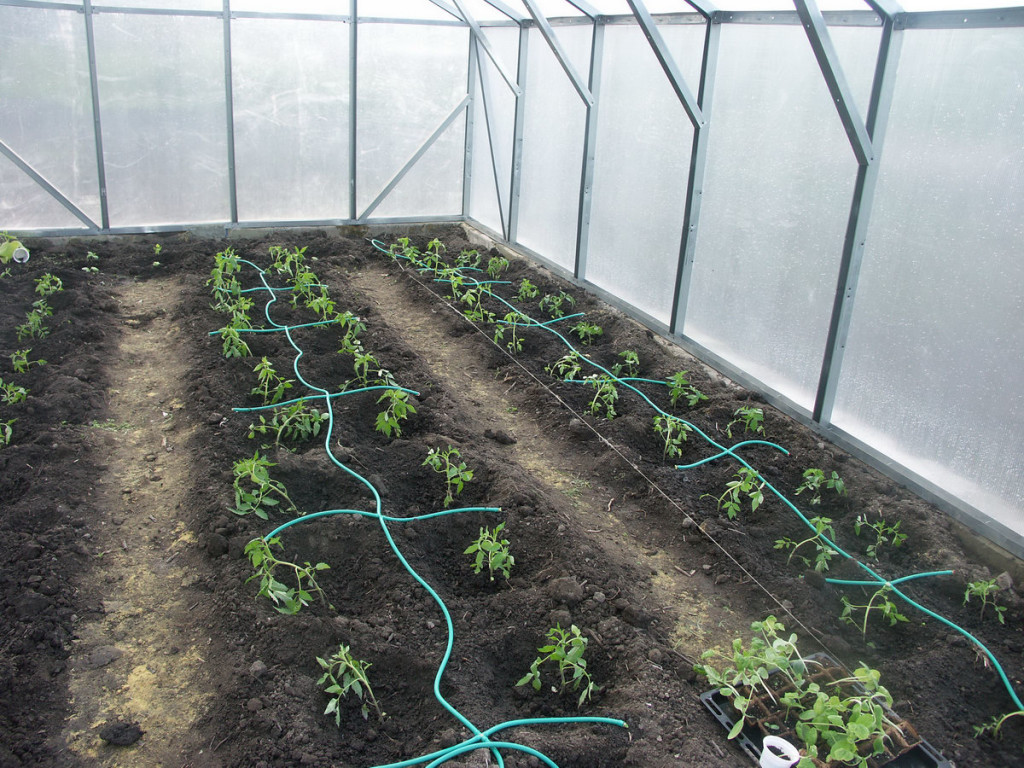How often to water tomatoes outdoors
Watering frequency
The frequency of watering a tomato plant outdoors depends on how quickly it dries. It is necessary to moisturize it abundantly, once a week - this will be enough, provided it does not rain. If there is any precipitation, you need to do it less often. There should be enough liquid in the ground after the moment of setting and before the tomato stops pouring. If you do not water the tomatoes in the open field on time, then they will be small, and even worse, they can completely fall off the ovaries. They can be irrigated not often, but the main thing is to do it correctly. And when the tomatoes have developed and grown, then the lack of moisture in them can lead to the fact that they crack.
And when the tomatoes have developed and grown, then the lack of moisture in them can lead to the fact that they crack.
Tomatoes do not need to be moistened frequently after planting.
In the open field, you also do not need to pour water often. It will be correct to do this less often, but with an abundant amount of water. This is a basic rule to be followed immediately after planting. But if often and in small portions - this is not right, moreover, such watering can negatively affect the fruits.
If there is a strong heat in the daytime, it is better to water the tomatoes after it subsides, literally before sunset. Since at night the liquid is well absorbed by the root system of the plant.
By the appearance of the plant, you can determine with the naked eye whether it has enough moisture. With a lack of it, the leaves will become darker and wilted. When the fruits begin to set, the amount of water during watering will need to be increased.
The best way to water
No matter how much you watch a video about planting, growing and caring for tomatoes, it's easier than reading an article - nothing will happen. After planting tomatoes in open ground, the best way to water them is by drip.
This method is very easy to equip with your own hands. Plastic bottles make your life easier. When using this method, the yield increases. It also has a beneficial effect on the safety of fruits and plants from the disease of the top rot. It will be correct if you add literally two or three pinches of ash per ten liters of liquid to the water for irrigation. Also, for a good harvest, you can sprinkle ash around the plants.
If you find a hard crust on the surface of the earth, be sure to loosen it immediately. This often happens after heavy watering or after a rainstorm. And if there is mowed mulch on the ground near your plants, then it is not necessary to loosen the ground every time.
The stream of water during irrigation should be directed to the planting site, that is, under the root. Never direct liquid onto leaves or fruits. If water droplets remain on the leaves, this will damage them. As a result, late blight spores may germinate.
Tap water is very hard and can reduce acid balance and soil temperature. You can also water it in the morning, the main thing is to monitor the temperature of the water.
What water to water
What water to water tomatoes with also plays an important role. After planting the plants outdoors, water them once or twice every week. A sufficient amount is approximately five liters for one bush. The most ideal option for watering a tomato is rainwater.
Gardeners recommend insisting water for irrigation in containers, and then adding fertilizers to it in the form of manure or weeds. This will make the water much softer.
Video "Watering Tomatoes"
On the record, an experienced gardener talks about the correct watering of tomatoes that are grown in the open field.
